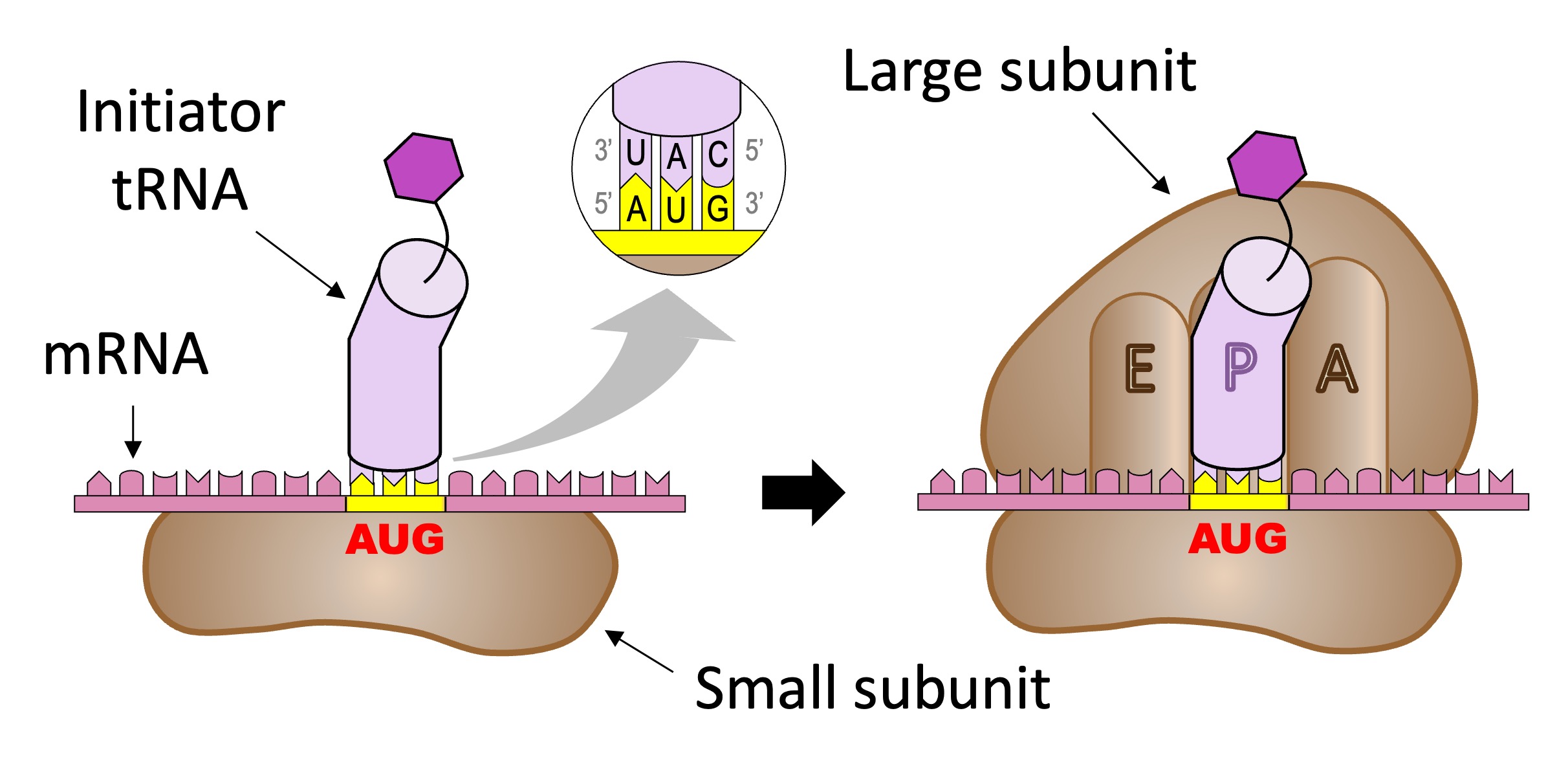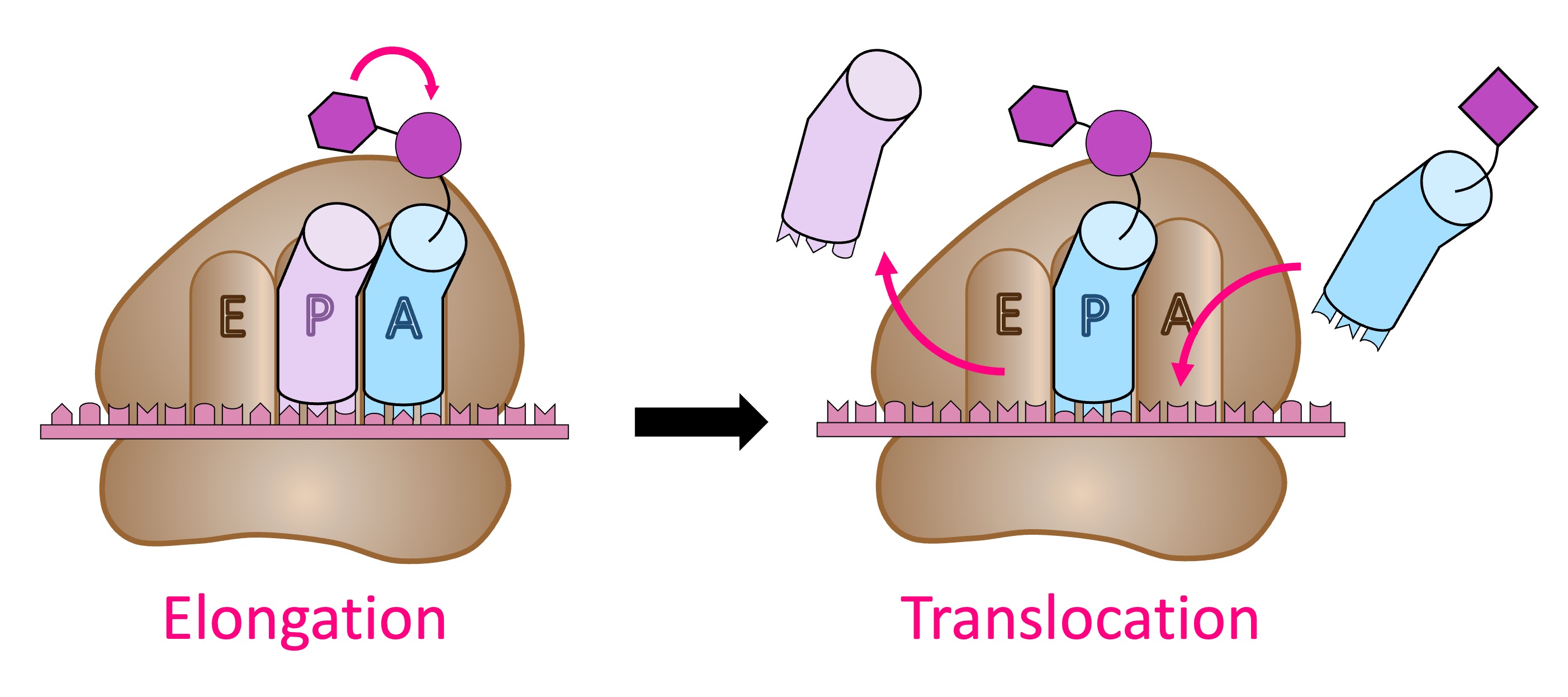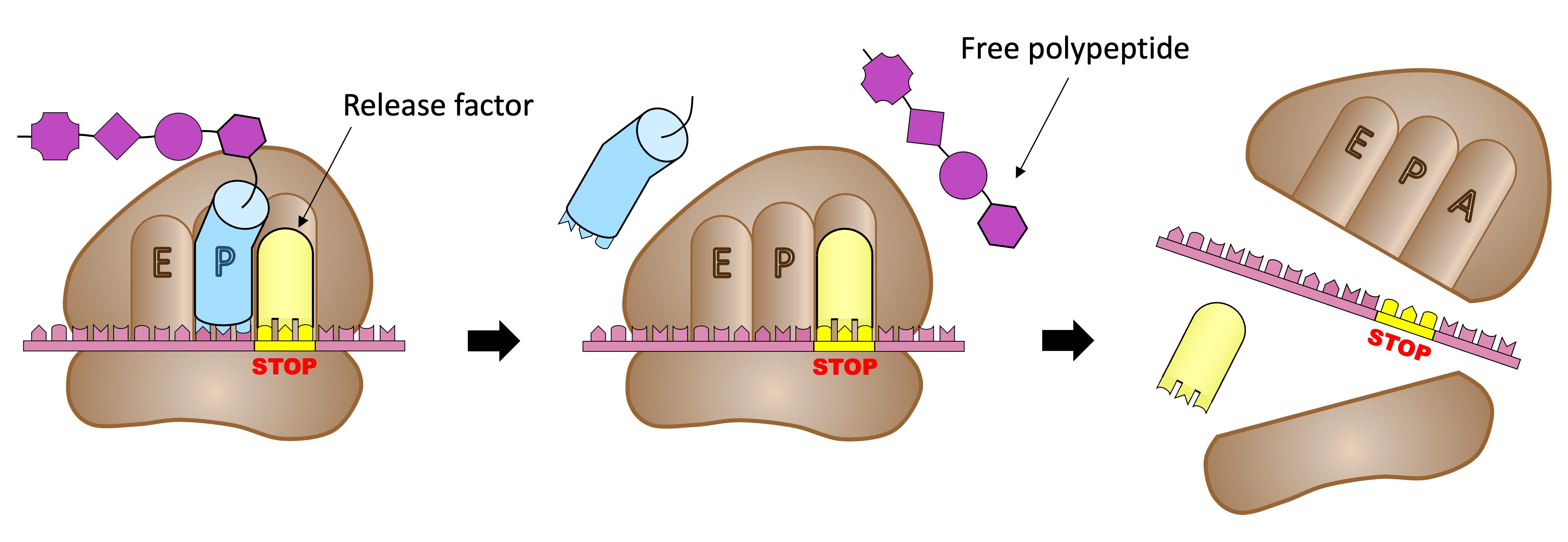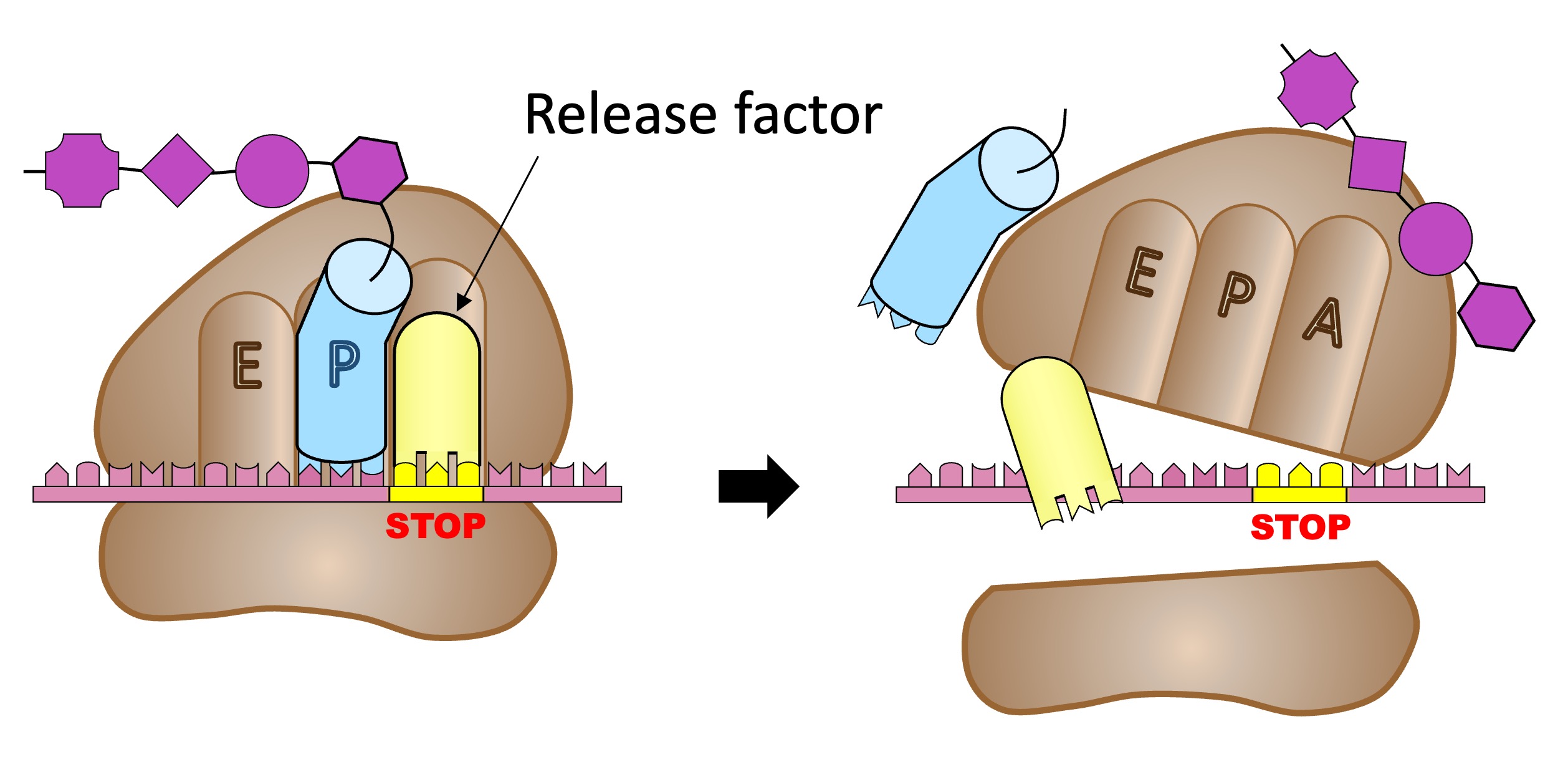

Translation
Translation (polypeptide synthesis) involves four key steps: initiation, elongation, translocation and termination
-
Prior to translation, tRNA molecules are fused to specific amino acids via a reaction involving ATP hydrolysis
-
The function of the ATP is to create a high energy bond that is transferred to the tRNA molecule
-
This ‘charging’ of the tRNA creates stored energy that is used by the ribosome to form a peptide bond
-
Initiation
-
The small ribosomal subunit binds to an initiator tRNA molecule that recognises the start codon (AUG)
-
The initiator tRNA is structurally distinct from other tRNA molecules and is only used to begin translation
-
-
This complex then attaches to the 5’-end of the mRNA transcript and moves towards the start codon (5’ → 3’)
-
In eukaryotes, the 5’-methyl cap helps to mediate this initial association (other initiation factors are also involved)
-
-
At the start codon, the large ribosomal subunit binds to the initiator tRNA, forming a complete ribosomal complex (all other initiation factors are now released)


Elongation
-
The large ribosomal subunit has three tRNA binding sites – an A site (aminoacyl), a P site (peptidyl) and an E site (exit)
-
The initiator tRNA is bound to the central P site and a second tRNA molecule pairs with the next codon in the A site
-
The amino acid in the P site is covalently attached via a peptide bond (condensation reaction) to the amino acid in the A site
-
The tRNA in the P site is now deacylated (no amino acid), while the tRNA in the A site carries the peptide chain
Translocation
-
The ribosome moves along the mRNA strand by one codon position (in a 5’ → 3’ direction)
-
The deacylated tRNA moves into the E site and is released, while the tRNA carrying the peptide chain moves to the P site
-
Another tRNA molecules attaches to the next codon in the now unoccupied A site and the process of elongation is repeated


Termination
-
Elongation and translocation continue in a repeating cycle until the ribosome reaches a stop codon
-
These codons do not recruit a tRNA molecule, but instead recruit a release factor that signals for translation to stop
-
The polypeptide is released and the ribosome disassembles back into its two independent subunits






